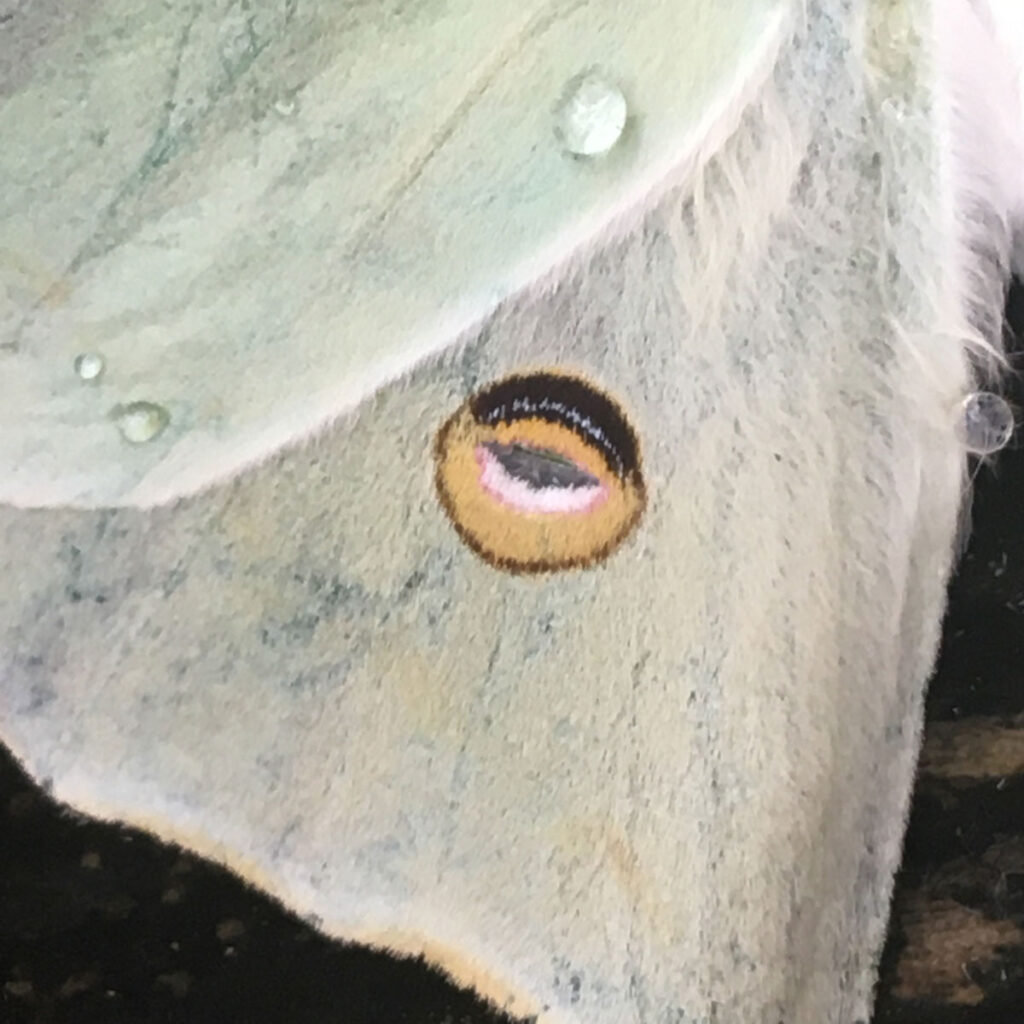Sadly this Lunamoth I found on the ground already dead. I had only seen one once before in Northern Virginia, so this was both wonderful to encounter, to find them here at Middle Way, but also heartbreaking, because it wasn’t alive. For some reason I find these moths mystical, and ethereal. It’s probably because they are nocturnal and you really don’t see them very often. They are also just… so beautiful.
There’s a really good book by Barbara Kingsolver called “Prodigal Summer” where this moth featured prominently. It’s a really good book.
Okay – this is really interesting, from Wikipedia “Imagos (winged adults) of this and related night-flying Actias species collectively referred to as “moon moths” have long hindwing tails. A “false target” hypothesis holds that the tails evolved as a means of reducing risk of predation by bats which use echolocation to locate prey. The moths use the spinning hindwing tails to fool bats into attacking nonessential appendages, with success occurring over 55% of the time. Experiments were conducted with Luna moths with intact wings and with the tails removed. With intact wings, a majority of the attacking bats contacted the hindwing tails rather than the body of the moth; only 35% of intact moths were caught versus 81% for those with clipped tails. The results of this experiment support echolocation distortion as an effective countermeasure”
Also “Giant silk moths have in common a mating process wherein the females, at night, release volatile sex pheromones, which the males, flying, detect via their large antennae. Males can detect these molecules at a distance of several miles, and then fly in the direction the wind is coming from until reaching the female. Luna moth females mate with the first males to find them, a process that typically starts after midnight and takes several hours”
Alternate Names: American Moon Moth Size: Wingspan 4.5"-7" Family: Saturniidae (Giant Silk Moth Family) Habitat: Larvae feed on broadleaf trees such as white birch, American persimmon, American sweet gum, plus several species of hickory, walnut, and sumac. Identification: Lime or spring green colored wings with a white body. Upper part of wing had a border of a brownish/pink/maroon color, and the tail wings have a spot on each that resembles an eye, with a long hindwing tail.











